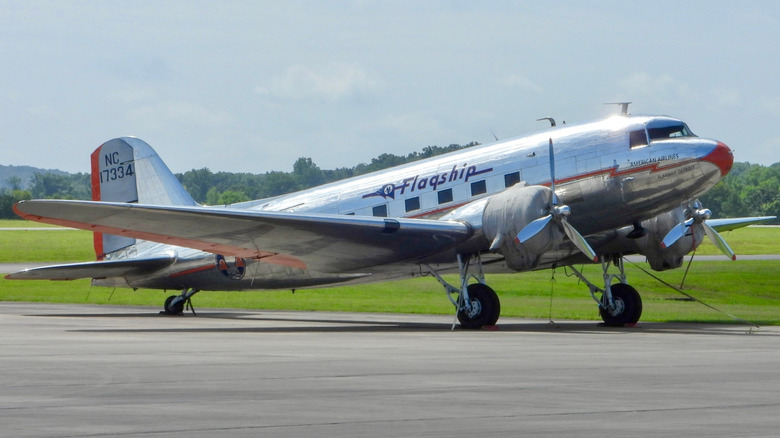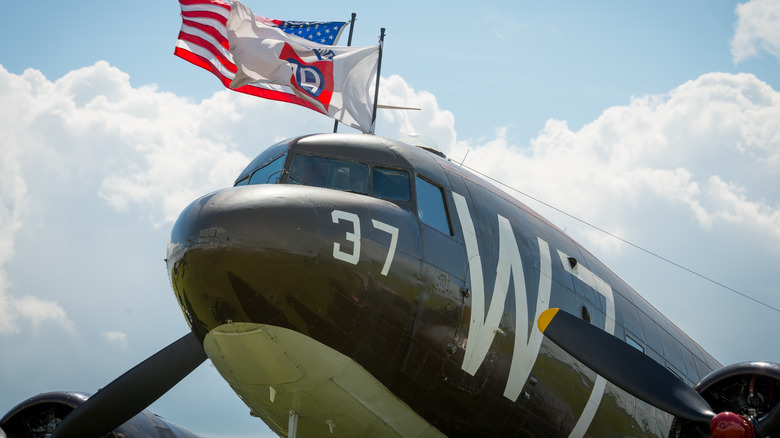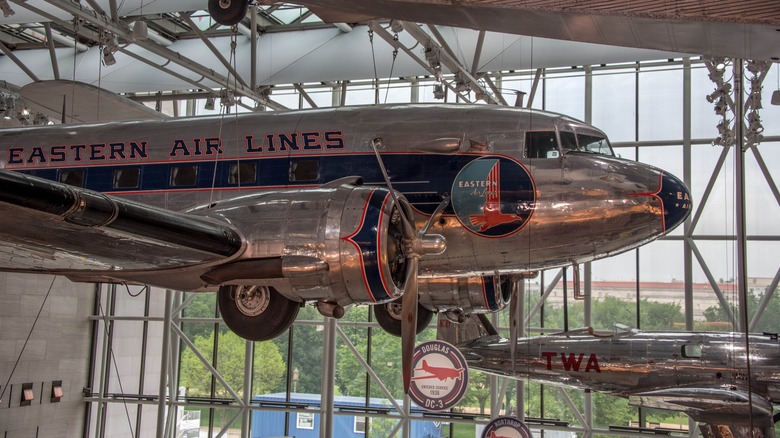How Many Douglas DC-3 Aircraft Are Still Flying Today?
When you visit the Smithsonian's National Air and Space Museum in Washington, DC, and at its Udvar-Hazy Center in Chantilly, Virginia, you expect to see relics of a bygone era. From the original Wright Flyer to the space shuttle Discovery, visitors can view decades of aviation history in one go. What they may not realize, however, is that some of the planes on display are still in use and in the skies. The Douglas DC-3 is one of them.
Introduced by the Douglas Aircraft Company in 1935, the DC-3 entered airline service in 1936. It was built to compete with Boeing's 247, which could carry 10 passengers and 400 pounds of cargo. The DC-3 was larger, more comfortable, and could carry 21 passengers. This may seem laughable by today's standards, as modern passenger jets can carry hundreds of people, but in those early days of commercial flight, it was considered a revolutionary passenger plane.
There are a few innovations from the 1930s that we still use today, like the electric razor and Scotch tape, but you don't see many Ford DeLuxe Roadsters on the road anymore. While no one is using the DC-3 for regular passenger operations, there are an estimated several hundred still flying today. Estimates vary by source: In 2013, Smithsonian Magazine reported that at least 400 were still in the air, while more recent counts put the number closer to about 164 airworthy DC-3s worldwide. Considering the rapid evolution of aircraft and the fact that the DC-3 was only in production until 1945, it's remarkable that any are still in the air.
The history of the DC-3
Before the DC-3, it took approximately 25 hours to fly from New York to Los Angeles with multiple stops and even multiple planes. While the DC-2 could hold 14 passengers and was a new breed of comfort, the CEO of American Airlines, C.R. Smith, went to Douglas to design a sleeper aircraft. Think of the sleeper cars on today's Amtrak trains — Smith wanted something that would allow passengers to travel more comfortably. The Douglas Sleeper Transport, or DST, hit the skies in 1935, allowing up to 16 people to nap as they crossed the country. This plane could also accommodate regular passenger seats, and the DC-3 was born. It could make the journey across the U.S. in about 18 hours, with only three stops for fuel.
The DC-3 was the first plane to make commercial aviation profitable. In just three years, by 1938, 95% of commercial flights were on a DC-3. Foreign airlines also used the planes and, according to the Smithsonian, by 1939, 90% of air traffic worldwide was on DC-3s. When World War II began in 1939, Europe was the first to modify the DC-3 for military use. The U.S. followed after it entered the war, ordering new versions of the plane that could move both troops and cargo. These planes had several designations and names, with the Brits calling it the Dakota and Americans dubbing it the Skytrain or Gooney Bird. The military version of the DC-3 was noted for its ability to take off and land on dirt runways, its low stall speed, and its long range.
DC-3s in the air today
It may look like an ancient relic compared to the passenger jets in the modern era, but the Douglas DC-3's versatility and reliability have kept it flying. While it isn't used for regular passenger service in the U.S., it's still used for sightseeing tours and skydiving. Elsewhere in the world, especially in developing countries, the DC-3 is still a popular choice due to its ability to take off and land on unpaved runways. In places like Colombia and Thailand, it may be used for freight transport, aerial spraying, and even passenger service.
Most of us will probably never experience flying in a DC-3, but there are plenty of opportunities to see one up close. They are on display at the National Air and Space Museum in Washington, DC; at the Lone Star Flight Museum in Houston, Texas; at the Museum of Flight in Seattle, Washington; and the New England Air Museum in Windsor Locks, Connecticut. Seeing one in the air will take a bit more planning, but some do participate in air shows, like the Flagship Detroit Foundation, which offers several events annually. If you're a pilot and you have your heart set on flying a DC-3, an organization called Incredible Adventures in Sarasota, Florida, will let you take the stick.


